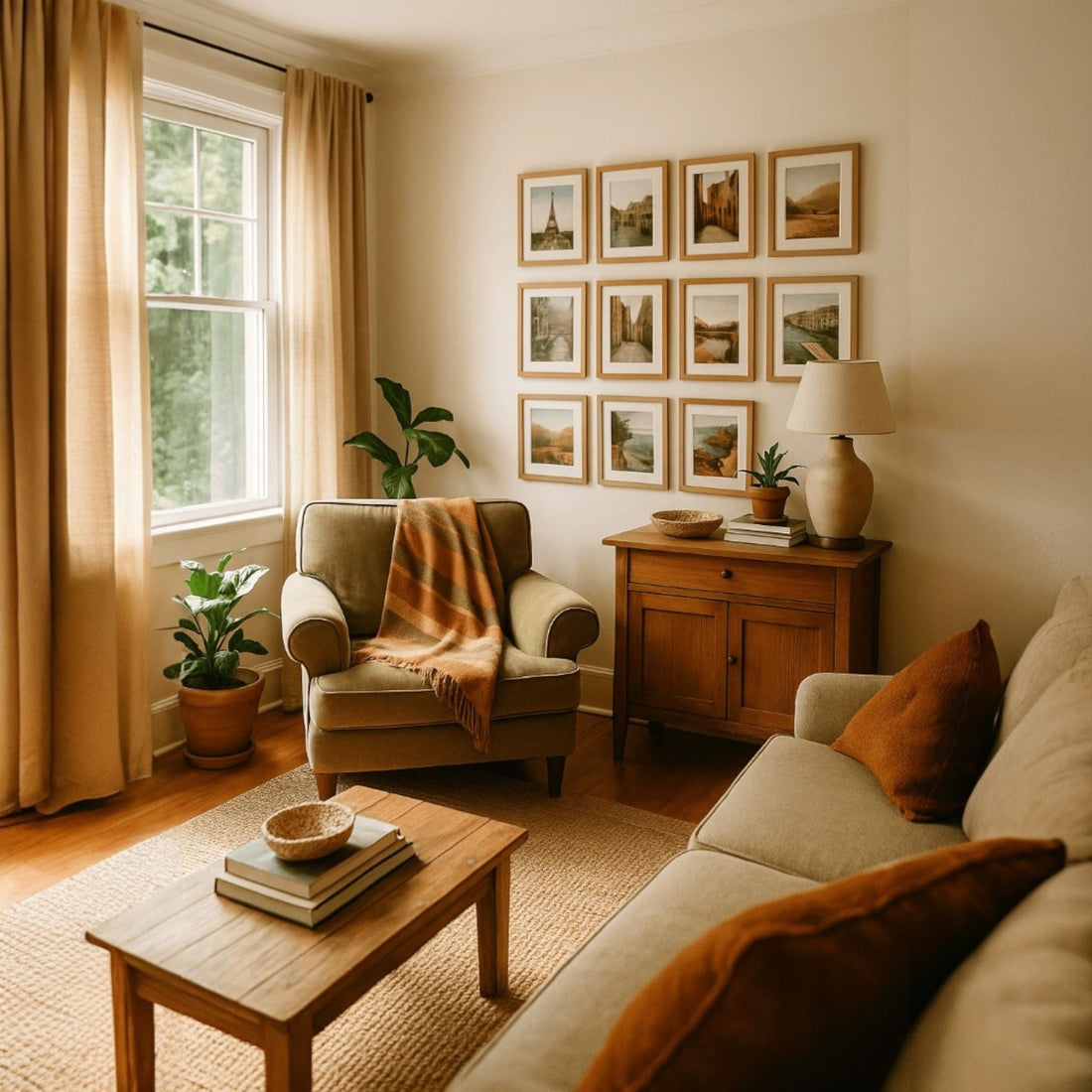
Personal Storytelling in Home Decor – Design with Meaning
Personal Storytelling Through Home Decor – Crafting Spaces That Speak Your Life
Every home has a story to tell—yet not every home tells it well. In a world overflowing with trends, Pinterest boards, and ready-made aesthetics, it’s easy to forget that your living space can be a living diary, a tangible map of your journey.
Personal storytelling in home decor transforms rooms from generic spaces into intimate narratives. Each object, color, and texture becomes more than decoration—it becomes a chapter of your life. This approach is timeless because it’s rooted in authenticity. It’s not about what’s fashionable right now—it’s about what matters to you, the moments that have shaped you, and the values you want to live by.
In this guide, we’ll explore how to design spaces that speak your life—rooms where memories breathe through the walls, where every glance lands on something meaningful, and where your identity finds a visible, comforting home.
The Power of Story in Interior Design
Storytelling is one of humanity’s oldest arts, and our homes are perhaps the most personal place we can practice it. Just as authors use words and filmmakers use images to evoke emotion, a well-curated home tells a story through its arrangement, objects, and atmosphere.
When you infuse personal storytelling into your decor, you go beyond making a room “pretty.” You create a space that feels lived in, loved, and layered with meaning—a space that:
- Sparks conversations
- Inspires you daily
- Anchors you emotionally
Memory as a Design Element
Memories are not abstract—they’re tangible. They live in the chair you curled up in as a child, the vase your grandmother gave you, the postcards from your first solo trip. Using these objects in your home connects you to your personal history and adds emotional texture that no store-bought item can replicate.
How to Begin Your Storytelling Journey at Home
Identify Your Core Themes
Every person’s life has recurring themes—adventure, heritage, resilience, creativity, love. Recognizing yours helps guide your design direction.
- If heritage is central, you might display handcrafted items passed down through generations.
- If adventure defines you, your walls could showcase travel photography, maps, and artifacts.
Choose Meaningful Objects
Select items that carry emotional weight:
- Family heirlooms
- Travel finds
- Personal artwork
- Gifts from important moments in your life
Layer with Sensory Details
Scents, sounds, and textures make your story multi-dimensional:
- Scent: A candle with the fragrance of your childhood garden
- Sound: A record player spinning songs from your formative years
- Texture: The roughness of a handmade ceramic mug or the softness of a vintage quilt
Use Photography and Art
Gallery walls can be chronological timelines, mood boards of your journey, or thematic collections (family, travels, milestones).
Pro Tip: Leave space for your story to grow. Your home should be a living narrative, not a finished book.
Storytelling Through Color, Light, and Texture
- Color: Warm earthy tones evoke nostalgia; cool blues bring serenity; bold contrasts express passion.
- Light: Soft, indirect lighting encourages intimacy; natural light fosters connection to daily rhythms.
- Texture: Worn wood, woven fabrics, and hand-thrown pottery convey authenticity and history.
By aligning these design elements with your narrative, your home becomes an emotional echo of your inner world.
The Emotional Impact of Story-Rich Spaces
Imagine sitting in your living room—not surrounded by random decor, but by tangible reminders of your life’s defining moments:
- The armchair where you read your first novel
- The photograph from the trip that changed your perspective
- The rug handwoven by a relative decades ago
These objects do more than fill a room—they anchor you in your identity. They remind you of your resilience in hard times, your joy in fleeting moments, and the people who have shaped your journey.
Why Storytelling Homes Are Rising in 2025
- Counter-Trend to Minimalism: People want meaningful minimalism—fewer things, but richer in personal value.
- Wellness-Driven Design: Surrounding yourself with emotionally significant objects improves mental wellbeing.
- Sustainability: Reusing heirlooms and second-hand finds aligns with eco-conscious living.
- Social Connection: Homes that tell stories create instant conversation starters for guests.
Science-Backed Benefits
Research in environmental psychology shows that living in a space filled with emotionally resonant objects can:
- Reduce anxiety by fostering a sense of belonging
- Boost creativity by surrounding you with inspiration
- Strengthen identity and self-esteem through visual reminders of achievements and values
FAQ
Q1: Is personal storytelling in decor expensive?
Not necessarily. Many meaningful items are things you already own. The cost comes in framing, arranging, and maintaining them—not in buying new decor.
Q2: How do I avoid making it look cluttered?
Curate intentionally—choose fewer, more powerful pieces, and give them space to breathe.
Q3: Can this style mix with modern trends?
Absolutely. Storytelling can be woven into any style—from minimalist to maximalist—by using personal objects as focal points.
Your home is more than a shelter—it’s a living autobiography. Through personal storytelling in home decor, you craft an environment that celebrates your journey, honors your values, and keeps your dreams visible.
This isn’t about achieving a picture-perfect showroom; it’s about walking into a room and feeling at home in yourself.


